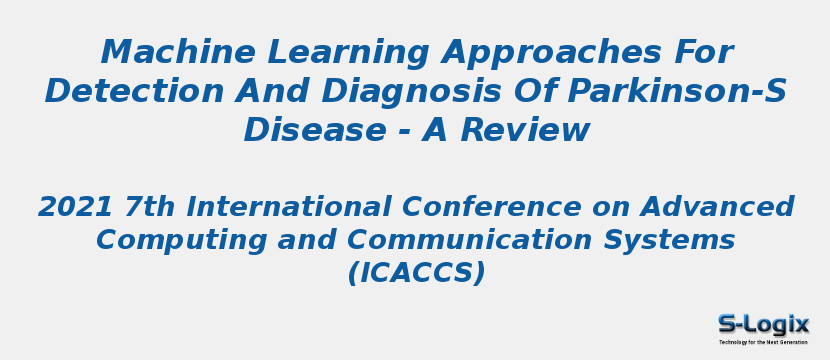Research Area: Machine Learning
Parkinson-s disease (PD) is disabling disease that affects the quality of life. It belimps due to the death of cells that produce dopamine-s in the substantia nigra part of the central nervous system (CNS) which affects the human body. People who have Parkinson-s disease feel difficulty in doing activities like speaking, writing, and walking. In the recent past, speech, gait and EEG signals have been investigated for the detection of PD. However, speech analysis is the most considered technique to be used. Researches have shown that 90% of the people who suffer from Parkinson-s disease have speech disorders. With the increase in the severity of the disease, the patient-s voice gets more and more deteriorated. The non-invasive treatments for voice analysis are available that helps in ameliorating the life quality of a patient. Thus, for building the telemonitoring and telediagnosis models for prediction, the speech analysis has been tremendously increased. The proper interpretation of speech signals is one of the important classification problems for Parkinson-s disease diagnosis. The main purpose of this paper is to contemplate the survey work of the machine learning techniques and deep learning procedures used for Parkinson-s disease classification. Deep learning and machine learning techniques have been used as a part of the discovery for the efficient classification of PD. The various classification models like support vector machines, naive Bayes, deep neural networks, decision tree and random forest are effectively employed for classification purposes. The analysis of results of different research works showed that both machine learning and deep learning algorithms have shown promising future and therefore paving a better way for the detection of Parkinson-s disease at its earlier stages. The classification accuracy achieved by the machine learning classifier. Among deep learning approaches, the deep neural network has achieved the best accuracy of 99.49%. The results obtained from different works suggest that artificial intelligence is becoming a powerful learning tool that has much to offer to data scientists as well as neurologists. In general the learning methods are adding value to decision-making problems especially in the field of medical diagnosis.
Keywords:
Author(s) Name: Iqra Nissar; Waseem Ahmad Mir; Izharuddin; Tawseef Ayoub Shaikh
Journal name:
Conferrence name: 7th International Conference on Advanced Computing and Communication Systems (ICACCS)
Publisher name: IEEE
DOI: 10.1109/ICACCS51430.2021.9441885
Volume Information:
